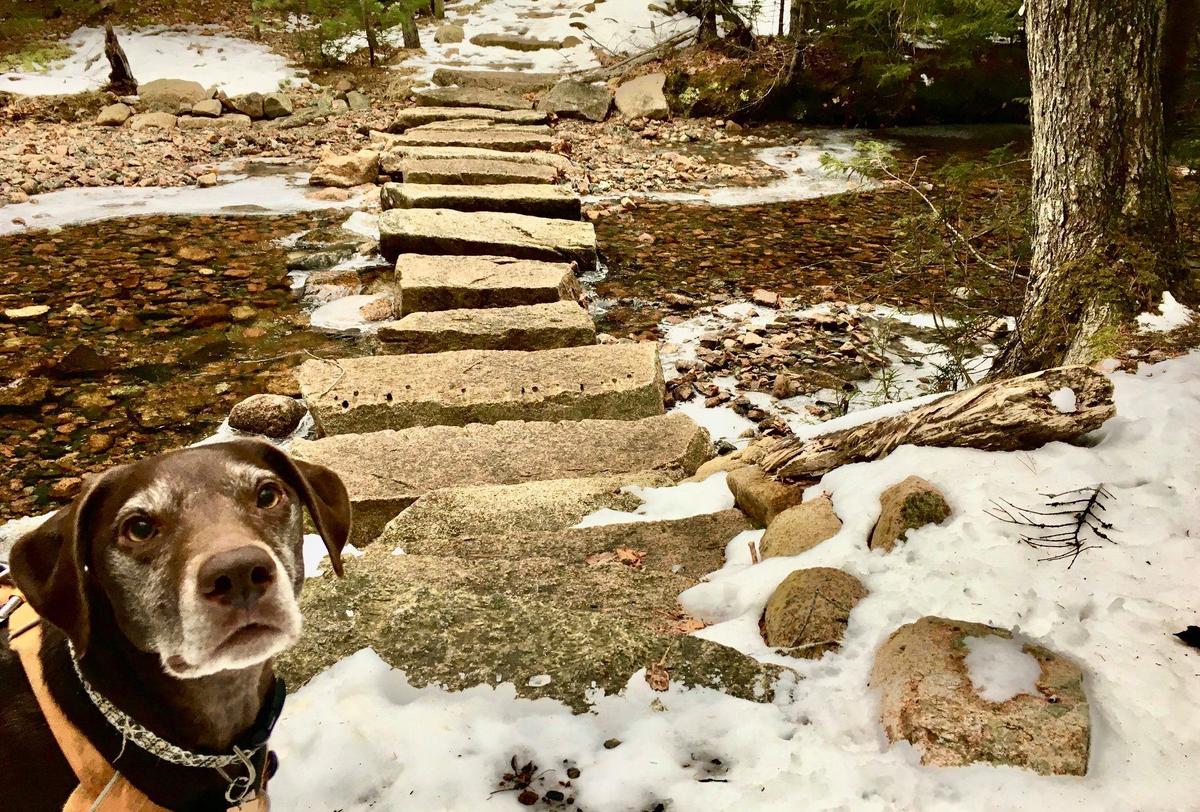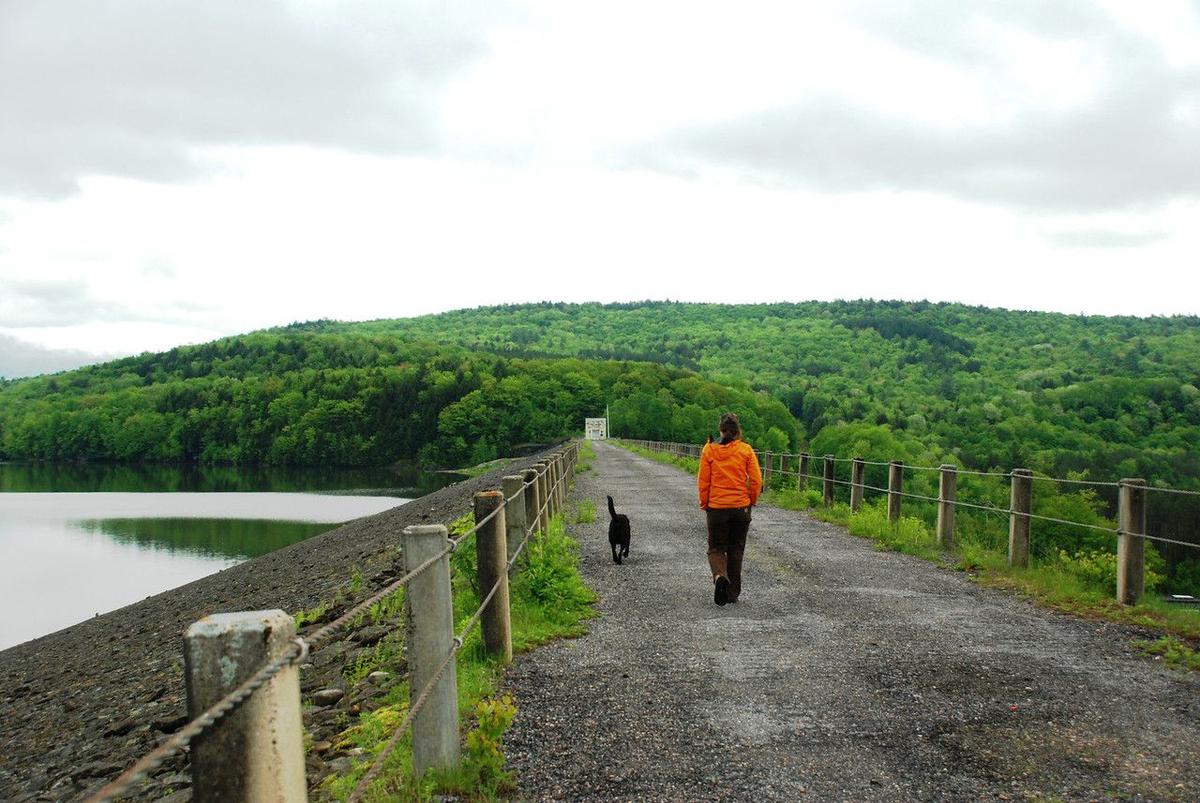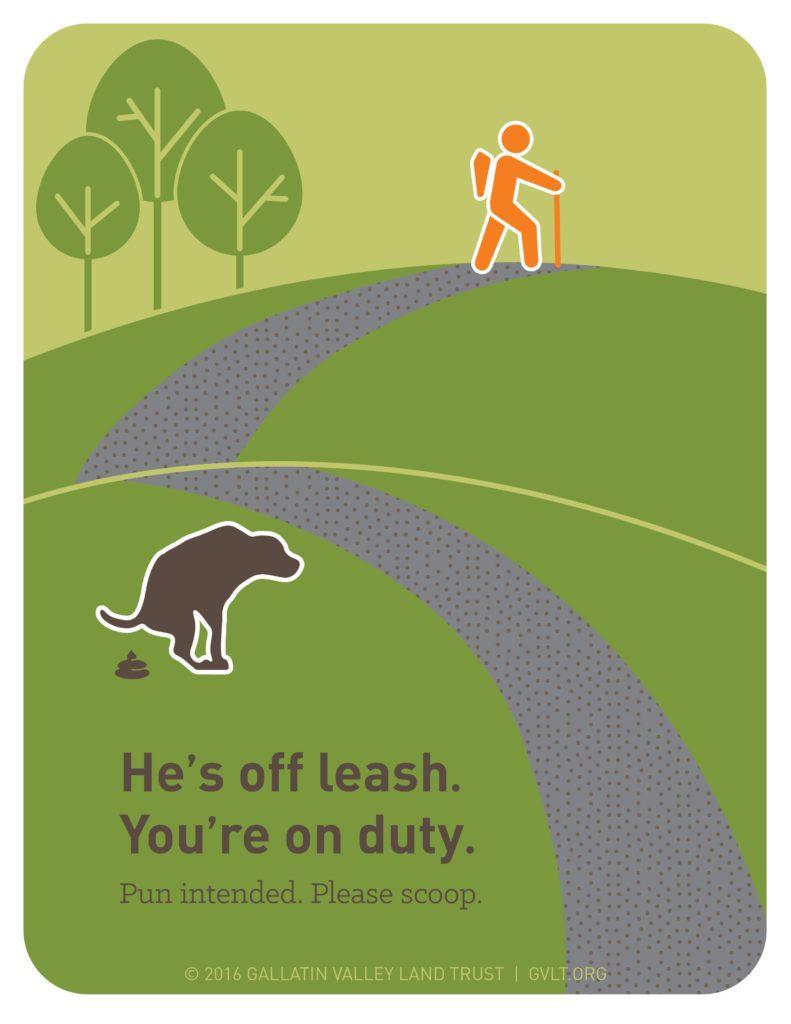
This Trail Talk post was created in conjunction with Nature Groupie – check out their post on Stewardship Actions here!
There’s nothing worse than going for a stroll down your favorite trail, breathing in the fresh spring air, when you suddenly smell something gross – and it’s coming from the bottom of your shoe! Dog waste is a problem in parks and on trails during all seasons, but it can be especially prevalent in the spring when the snow melts and reveals the waste that dog owners neglected to pick up during the winter months.

Yet the worst part about dog poop is not the stinky smell coming from the bottom of your shoe. Dog feces can contain bacteria, parasites, and nutrients that can be a risk to you, your dog, and the natural world you both enjoy; avoiding direct contact with poop doesn’t mean you’re avoiding risk. Fortunately, all it takes is some simple stewardship practices and good habits to make our trails cleaner and safer for all hikers and their furry companions.
It is estimated that 11-50% of dog waste in the US is infected with one or more parasites. Giardia, a parasite that is the enemy of anyone who likes to drink from mountain streams and has ended many a backpacking trip, is the most common parasite found in park-attending dogs. In addition, Manchester, New Hampshire ranked number 8 in the country last August for hookworm, a disease caused by another parasite of the same name that is spread through fecal matter. Hookworm can infect animals and humans and can survive in the soil for months. Poop that is not picked up will get caught up in runoff and can pollute soil and water, harming fish, wildlife, native vegetation, and drinking water supplies. While feces from wildlife can spread seeds and provide important nutrients to an ecosystem, dog waste introduces foreign nutrients into an environment from pet food. In Rye, New Hampshire, elevated levels of bacteria in the Parsons Creek Watershed prompted the town to place a fine of up to $1000 for not picking up dog waste. An excess of the nutrients from dog poop can even cause algal blooms and create suitable conditions for the growth of invasive plants.

As compelling as the arguments are for picking up your dog’s poop, it’s hard to avoid the twinge of dread you get when your dog squats down on the trail for a #2. But there are ways to minimize the gross part of picking up and packing out dog waste. Purchasing a roll of dog bags or reusing the plastic bags or the vegetable bags you get from grocery stores will give you a quick and clean way to pick up dog poo. Once bagged, you can carry it out in hand, keep it in a store-bought poop container (or even an unused water bottle), pin it to your dog’s leash, or tuck it in your dog’s pack if they have one. If you’re in the backcountry or on a trail without a bag, you can also treat dog waste like human waste by digging a 6-8 inch hole at least 200 feet from any water sources and burying it there. Make sure to deposit dog waste in a trash can or dumpster. If there isn’t a trash can at the trailhead, bring it home and throw it out in your trash. A pile of poop bags at the trailhead is just as unappealing as poop along the trail. Don’t assume someone else will pick up after you!

From the potential for disease and environmental harm to the fear of surprise poo on your shoe, there are a multitude of reasons to care about dog poop. But as a recent sign campaign in Bozeman, Montana, sums up, there is one simple and easy answer: please scoop!
Success! A new password has been emailed to you.